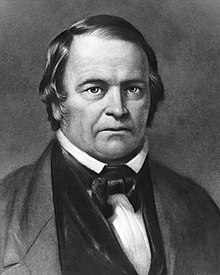I lived in London in the mid-70s, and found much to love about the place. The members of my family whose genealogical roots were planted in the British Isles had inculcated me with an enduring Anglophilia long before I set foot in the place. So I was predisposed to enjoy the accents, Georgian architecture, desiccated wit and lousy food, but it took months of jumping on the rear of red buses and fighting off chilblains to really appreciate Britain’s deeper charms.
The most pleasing contrast with America was the absence of celebrity culture. It seemed as if the Royal Family sucked up all the voyeuristic oxygen, leaving little for movie stars and football players.
This became clear when I was told several of the blokes I’d been hanging around for months at our local pub were cast members of Monty Python, who were early in their ascent, but already internationally famous. I didn’t realize this because no one fawned over them, badgered them for autographs or snapped flash bulbs in their faces (pre-selfie, thank the good Lord). In fact, Graham Chapman always looked a little lonely sitting there by himself at the bar.I cleave to a similar tradition, where I admire certain people whose accomplishments have made them famous, though never for the fame itself.
I’ve met a few celebrities along the way, most of whom were exceedingly gracious and well mannered, along with a handful of jerks who likely achieved that designation through certain native gifts.Since America does have a robust celebrity culture, I’m used to long, passionate public eulogies for anyone dying with a Q rating above .1, some of whom I genuinely grieve having lost. There’s nothing wrong with this, since every passing is a sad event for their loved ones, and knowing a little more about their lives, however belatedly, is meaningful. That written, it’s easy to become inured to this type of commentary when it’s so plentiful and predictably anodyne.
Thus I found myself unusually stirred by a recent crop of celebrity deaths, mostly because I felt some personal affinity for the belated. Since this is a literary centric platform, I’ll lead with Tom Stoppard, my favorite contemporary playwright by heads, shoulders and torsos. In the hierarchy of unfair distribution of talent, Stoppard was unrivaled. It was as if his very thoughts were conceived in perfect, lyrically brilliant prose, and all he had to do was jot them down. He not only understood how to render human speech as the finest writers would have wished, he improved on the product. And he was born in Czechoslovakia.
When I wasn’t clinging to the cliffs far below Stoppard’s literary heights, I spent years designing and building houses, and all the stuff that goes inside. I’ve written about the parallels between pleasing, yet functional, architecture, and a well wrought book, and I would say that Robert A.M. Stern and F. Scott Fitzgerlad had a lot in common, aside from mysteriously lettered names.
Stern managed to be both revolutionary and traditional, to impress and startle the senses, while creating sturdy structures sure to endure for all time. I studied and tried to emulate both those guys, mostly unconsciously, since their guiding lights appeared to me self-evident.Among my other abiding pursuits has been playing bass and guitar in rock bands, as well as folk and bluegrass ensembles. I knew early on I’d never be the lead guy, never a Hendrix or Doc Watson, but I was a serviceable rhythm guitarist honored to be a reliable backup for the virtuosos at the front of the stage. In this occupation, Steve Cropper was the A.M. Stern, the Tom Stoppard of tasteful chops and steadfast rhythmic structure. There’s a long list of huge pop hits that were composed around his guitar licks, which were woven around seemingly simple, elegant
phrasing, that every aspiring guitarist has to learn if they hope to be accepted into a jam session. These contributions are so significant, so fully integral to the musical language we all use, that you hardly notice they’re there.I was very aware of these important influences as I went along, but it wasn’t until Rob Reiner died that I realized he took up a similar space in my heart. I was frankly astonished that he’d directed all those movies that I relish, his work being so protean and quietly influential. To come back to the realm of literary expression, Reiner understood and valued fine writing. It clearly mattered to him, and he knew how to make exceptional creativity accessible, but also bring well-deserved attention to its brilliance. As such, he was the Maxwell Perkins, the Lorenzo de’ Medici of cinema.
Triteness is the offspring of sentimentality, and since there’s nothing like death for
inspiring sentiment, it’s hard to express genuine loss with the dignity it deserves. So the best I can do is be grateful for what these men gave me over the years, nurturing my better parts and making the daily effort of life more worthwhile.














